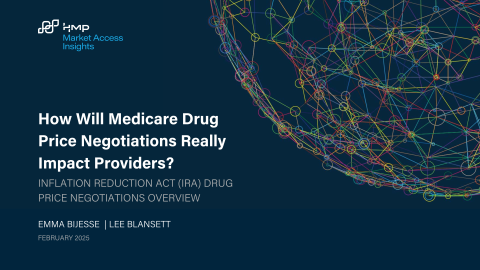

Article
Unlocking Oncology Pathway Impact: Beyond Lives Covered to Real Prescribing Influence
November 25, 2024Authors
Topics
As Oncology pathway programs continue to become more prominent in the marketplace, manufacturers are being challenged to assess how influential a specific pathway is.

Identifying Impactful Oncology Pathways
With the growing number of oncology pathway programs, manufacturers are looking for opportunities to identify which ones are the most impactful. While assessing the number of covered lives subject to a pathway provides an objective and quantitative metric, our research indicates that the number of lives is misleading and will not identify the pathway programs that are most likely to impact a brand’s market share.
Instead, manufacturers should start with identifying the pathways that are most likely to influence prescribing behaviors. Two key factors that indicate greater pathway influence include:
- Workflow Integration: Pathways that are easy to access and integrated into prescriber patient care workflows are most likely to influence treatment decisions.
- Adherence Monitoring: Pathways where organizations have processes and metrics to monitor adherence have a higher potential to impact prescribing patterns.
Workflow Integration
Pathway user experience plays a crucial role in overall effectiveness and impact, yet is often overlooked. Key factors that influence user experience include:
- Timing of Interaction: Pathways that offer clear treatment guidance before or during patient encounters are more effective in influencing physician prescribing.
- Electronic Medical Record (EMR) Integration: Pathways embedded in EMRs provide real-time feedback, making it easier for physicians to view and order pathway compliant treatments. Comparatively, prior authorization portals or PDF-based pathways infrequently capture the attention of busy physicians.
- Ease of Use: Simpler pathway interfaces are more likely to be followed, especially by time-constrained physicians.
Manufacturers should assess these user experience factors to understand which pathways are most likely to impact prescribing behaviors.
Pathway Adherence
In addition to user experience, identifying the processes and tools that drive pathway adherence is critical. Factors that increase adherence include:
- Limited Access to Off-Pathway Treatments: Barriers to off-pathway options, such as “hiding” certain treatments or requiring complex approval processes encourages adherence.
- Monitoring Systems: Regular adherence tracking increases pressure on prescribers to follow pathways.
- Financial Incentives: When wavering between an on- and off-pathway treatment regimen, financial rewards tied to adherence can tip the scales.
Manufacturers should prioritize pathways that utilize these tools, as they are most likely to influence prescribing behavior.
Back to the Numbers
While our report quantifies the number of patients affected by payer and provider pathways, our research has proven to us time and time again that even though a pathway may cover 53 million lives, its impact is minimal if the pathway has poor workflow integration and minimal adherence mechanisms. Assessing lives covered is only meaningful after identifying the pathways with the ability to influence physician behavior.
Our 2024-2025 Oncology Clinical Pathways Report, releasing in December, delves into these factors and provides detailed profiles of how each pathway affects physician prescribing behavior.
In the meantime, I'm here to answer your questions and would love to hear from you! Send me a note at dbuchenberger@hmpglobal.com.
The Latest
Article
Thought Leadership Whitepaper: How Will Medicare Drug Price Negotiations Really Impact Providers?
As manufacturers prepare for Medicare drug price negotiations, a critical question emerges: How will your provider engagement strategy evolve when Maximum Fair Prices (MFP) take effect in 2026?
Emma BijesseArticle
Meet Dan: Researcher, Dad, and Oncology Report Innovator
At HMP Market Access Insights, we’re lucky to have a team of experts dedicated to uncovering meaningful insights in the oncology space. One of those experts is Dan, whose work is shaping how we approach community oncology research.
Daniel BuchenbergerArticle
Leveraging the IDN Dataset: Your Essential Tool for 2025
As IDNs face increasing complexity in oncology management, having a strategic approach backed by actionable insights is critical. Our dataset doesn’t just offer data—it equips your teams with the tools to anticipate challenges and seize opportunities.
Emma Bijesse





